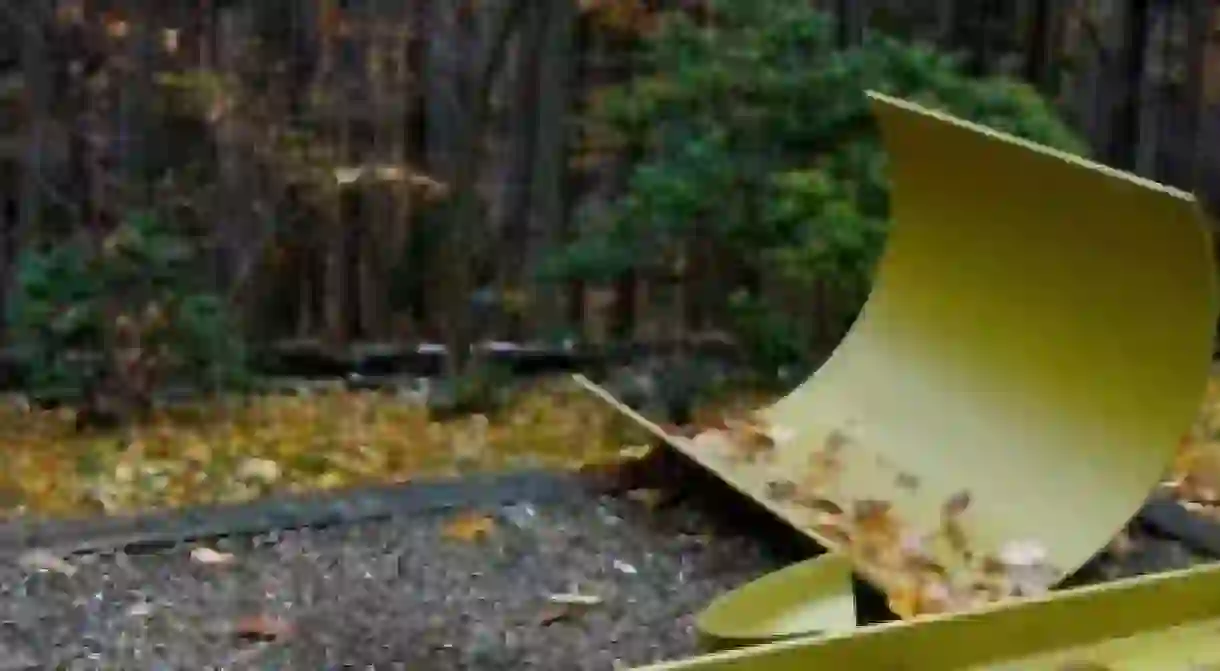The Prolific Career of Anthony Caro: Britain’s Greatest Abstract Sculptor

Pioneering Abstract sculptor Sir Anthony Caro passed away following a heart attack on October 23rd 2013. The British artist, who is celebrated for his painted, large scale, steel constructions, was 89 years old.

Rivalled only by his mentor, Henry Moore, Sir Anthony Caro (1924 – 2013) is commonly regarded as Britain’s greatest modern sculptor. Yet the knighted artist was not always set for artistic stardom. His stockbroker father encouraged his young son to complete his first degree in engineering at Christ’s College, Cambridge. Later, following a year of service in the Royal Navy, Caro returned to study sculpture at Regent Street Polytechnic and then at the Royal Academy. His most significant moment came when the new graduate tenaciously knocked at the studio door of master British sculptor Moore, and offered his services as an assistant. Moore told Caro to return six months later, which he did, leading to the latter artist’s most profound educational experience. During the 1950s Caro was given access to Moore’s extensive library, led on London gallery tours by his great teacher and introduced to other important figures in the art world. He became inspired by Moore’s semi-abstracted forms, the monumental scale of his works and the importance he placed on ‘truth to materials’. It was during this period that Caro began to acquire international acclaim for his figurative clay sculptures. Soon thereafter, in the early 1960s, he was introduced to American sculptor David Smith, who played the second most influential role in the career of the budding artist. Smith’s stainless steel works of pure abstraction quite evidently influenced Caro, who immediately began to create the welded steel sculptures for which he is best known.

The new steel works recalled the aesthetics favoured by early twentieth century Cubists. Fragments of the material, from wide flat sheets to long thin strips are balanced in delicate harmony in works like Early One Morning of 1962. His careful assemblage and method of coating the sculpture in solid pigment adds a certain light spiritedness that transforms the way the viewer perceives the industrial material. Although Caro’s initial reason for painting his sculptures was merely to prevent the development of rust, the artist described how soon each sculpture began to require a certain colour. In one amusing anecdote, he told of how Early One Morning was first painted Green, then placed out on the lawn where, under natural lighting, he could determine if the hue suited the work. Choosing to sleep on the matter, the artist awoke the following morning and gazed upon the sculpture with his painter wife Sheila Girling. Girling then notably proclaimed ‘that’s definitely a red sculpture’, to which Caro replied that she was absolutely correct. In 1963 when these early abstract sculptures were exhibited at London’s Whitechapel Gallery, the success of the show set the precedent for the rest of his highly celebrated career. Over a period of six decades Caro produced thousands of works, never settling on his past achievements and always looking ahead to the next project. He continued to make work until his death, and expressed his intention to expand upon his oeuvre until he reached 100 years of age.

Later works grew in size and ceased to be painted. Although Caro experimented with other materials like clay, paper, silver and bronze, steel remained his primary medium. The artist surprised his followers, who expected from him strict abstraction devoid of reference, when he created three dimensional interpretations of paintings by Matisse, Monet, Manet, Rembrandt and Rubens. One of his most stunning and immense sculptures, After Olympia, was completed upon return from a visit to the Temple of Zeus at Olympia in Greece. The 20 metre long piece was meant to pay homage to the friezes that once embellished the temple pediment. Caro received harsh criticism from serious modernists, who suggested that he had abandoned his standards, yet the sculptor maintained that rules are there to be broken. After meeting renowned American architect Frank Gehry in 1987, Caro embarked on a new experiment that he referred to as ‘sculptitiecture’, merging the two disciplines in several ambitious works. Sea Music is one such example, standing along the shore at Poole harbour in Dorset, Southern England. The work incorporates stairs and platforms that beg to be climbed over and interacted with. Following seamlessly from his architectural sculptures, Caro was one in a team of three selected to design and construct the Millennium Bridge that now connects St. Pauls and the Tate Modern, the first bridge to be constructed over the Thames in over a century.

As both a gifted artist and an extraordinary teacher, Caro taught sculpture at Central Saint Martins from 1953 until 1981, influencing the next generation of British artists. Among his students many followed in his footsteps, acting as his successors, while others challenged his ideas with ferocity. It was this challenge that drove the artist to produce work until his death, alongside his sharp mind, bountiful creativity, and modest recognition that there is always more to learn. Anthony Caro has been the subject of numerous monograph exhibitions, among which are: ‘Anthony Caro: A Retrospective’ (1975), at the Museum of Modern Art, New York and the Walker Art Center, Minneapolis, ‘Anthony Caro’ (2005) at Tate Britain, ‘Anthony Caro on the Roof’ (2011), at Metropolitan Museum of Art, New York , and an exhibition at Museo Correr in Connection with the 55th Venice Biennale in 2013. By Ellen Von Wiegand













